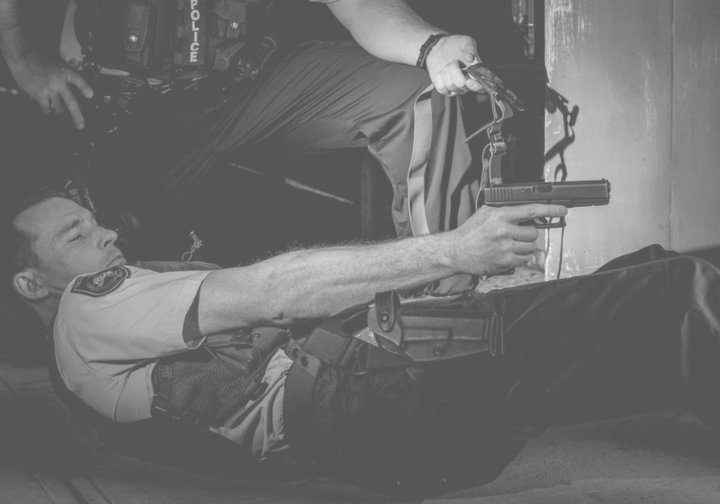Over the last few weeks, I have noticed an increase in the number of incidents where Police Officers (especially Motorcycle Officers) have been injured in the line of duty. See the video below from Queensland Police if you haven’t seen it already.
The video got me thinking as to how and what I would do if I was a First Responder rolling up to that scene to treat the officer or if I was responding to a similar incident.
Not just the medical treatment but the scene. It’s dark, raining and there is a bad dude somewhere who wants to hurt people.
What is your thought process? How would you approach this scene and not only treat the patient but the whole scene?
Now even though this is primarily a pre-hospital or tactical medical blog and website. I’m going to discuss the non-medical response to incidents like these.
When responding to a trauma incident, I am a big fan of the MARCH mnemonic. MARCH is an amazing tool to use when assessing and treating a trauma casualty but what it lacks is the assessment of the environment or scene. This is where we throw an “S” onto the front of MARCH for Security/Scene/Safety.
S- SCENE SAFETY/SECURITY
M- MASSIVE HAEMORRHAGE
A- AIRWAY
R- RESPIRATIONS
C- CIRCULATION
H- HEAD INJURY AND HYPOTHERMIA
Not only do we need to ensure that the scene is initially safe enough to enter, or to provide security and/or neutralise the threat if you are an LEO, we need to maintain situational awareness throughout the treatment of the casualty.
What is Situational Awareness (SA)? SA is the cognisance or awareness of what is happening around you. It not only includes who is around you but where you are and where you should be. Who or what is a threat to your health and safety.
In my opinion, Jason Bourne is the grand Kung Fu master of Situational Awareness. Always reading his surroundings to get one step ahead of the next assassins trying to knock him off.
“OBSERVE & ORIENTATE= SITUATIONAL AWARENESS”
For the more experienced First Responders reading this, we know SA is not something we can just read in a book or blog, and immediately become a Jedi Master in scene safety and situational awareness. Knowledge, education and experience will assist us in developing Situational Awareness.
An example of this (or lack of) is a job on the Ambulance where we attended a standard mental health call to a middle-aged male patient who is complaining of hearing the voice of the devil. I was working with a Trainee Paramedic who after accessing the house, walked up to the patient and knelt next to him, introduced themselves and preceded to ask the standard mental health questions in a non-threating and sensitive demeanour.
The compassion and sincerity this young trainee showed were amazing but they focused solely on the patient and didn’t have any SA. They had in fact, missed some key signs that had red-flagged this patient as a potential threat to both us and the patient. After walking into the house behind the trainee and orientating myself to the scene I was able to quickly identify the following :
- A large kitchen knife on the messy dining room table only a few meters from the patient (I’m not sure about you but I normally keep mine in the kitchen)
- An envelope on the coffee table that had the word “sorry” on the front
- The patient sounded agitated, had engorged neck veins and was clenching his right fist
Now thankfully nothing went wrong on this job and we were able to handle the situation safely and effectively but as you can imagine it could have gone very bad, very quickly.
Having the Situational Awareness mindset is imperative for First Responders. Don’t just tick that “scene safe” box and then put the scene/safety/security assessment away in the back of your mind. Constantly keep it in the front of your mind and maintain SA and thus your safety!
Stay safe.
Jez.
